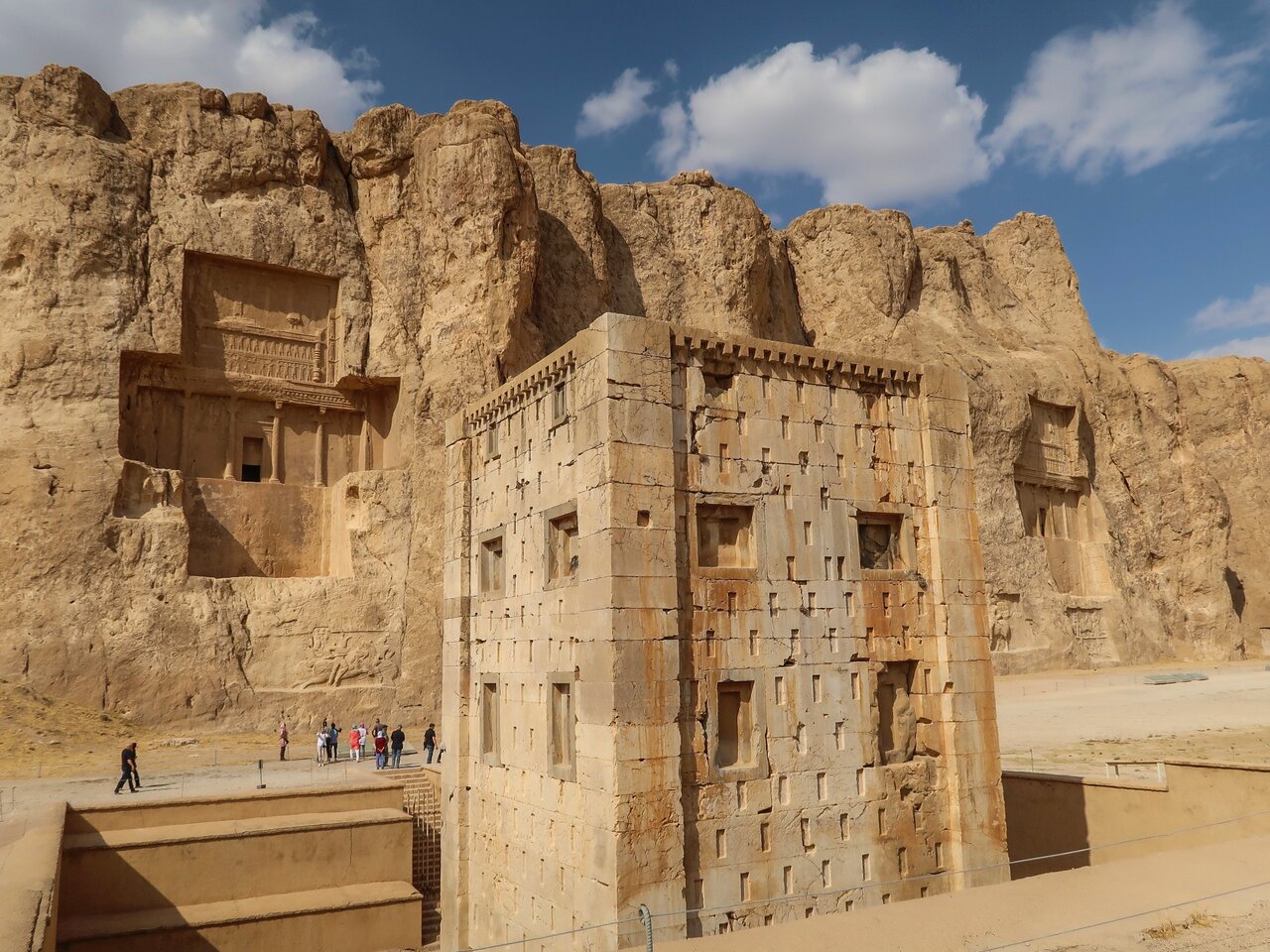Naqsh-e Rostam: efforts underway to safeguard treasured site

TEHRAN - Efforts have been initiated to monitor, protect, and restore Naqsh-e Rostam in response to a recent rainfall causing slight damage to the treasured site, announced a relevant official.
“Due to recent heavy rains, the ancient site of Naqsh-e Rostam experienced waterlogging, leading to multiple subsidence incidents in the area,” Alireza Askari Chaverdi said.
“Currently, monitoring, protection, and restoration teams, along with archaeological groups from the Persepolis World Heritage site, are stationed at this ancient site.”
Nestled near the UNESCO-listed Persepolis, this site holds a special place in Persian history and culture.
Following the preparation of a technical report, a project to restore Nagh-e Rostam will commence, the official said.
Regarding the subsidence issues, Askari Chaverdi mentioned that some of the subsidence incidents are linked to general subsidence in the Marvdasht Plain, while others are attributed to the impact of these recent rains.
“Following immediate approval from the Cultural Heritage Research Institute, the experts affiliated with the Persepolis World Heritage site will begin work to protect and restore Naqsh-e Rostam.”
Naqsh-e Rostam, an awe-inspiring testament to ancient craft skills, showcases a series of breathtaking Sassanid bas-relief carvings.
The necropolis houses four imposing tombs believed to be the final resting places of Persian Achaemenid kings—Darius II, Artaxerxes I, Darius I, and Xerxes I, arranged left to right along the cliff face. However, scholarly discourse persists regarding their precise identities.
Above these majestic tombs, intricate bas-reliefs echo the grandeur of Persepolis, portraying kings seated on thrones, upheld by figures symbolizing the diverse nations under their rule. Additionally, within the vicinity of Persepolis, lie two similar graves, likely belonging to Artaxerxes II and Artaxerxes III.
Beneath the solemn funerary chambers, seven Sassanian-era bas-reliefs adorn the cliffside, vividly depicting imperial conquests and regal ceremonies. Informative signboards accompany each scene, offering detailed descriptions in English.
At the base of Naqsh-e Rostam stands the enigmatic Ka’beh-ye Zardusht, or the Kaaba of Zoroaster. This square structure, approximately 12 meters tall and 7 meters wide, likely dates back to the early 6th century BC, featuring inscriptions from various periods thereafter.
While the linguistic significance of Ka’beh-ye Zardusht is evident, its original function remains shrouded in mystery. Some speculate it served as a tomb for Achaemenian royalty or perhaps as an altar, potentially dedicated to the goddess Anahiti, associated with royalty, war, and fertility.
The name Naqsh-e Rostam, translates to "Picture of Rostam," pays homage to the legendary Iranian hero celebrated in Shahnameh and Persian mythology. In ancient times, locals mistakenly believed the carvings beneath the tombs depicted scenes from Rostam's tales.
AM
Leave a Comment